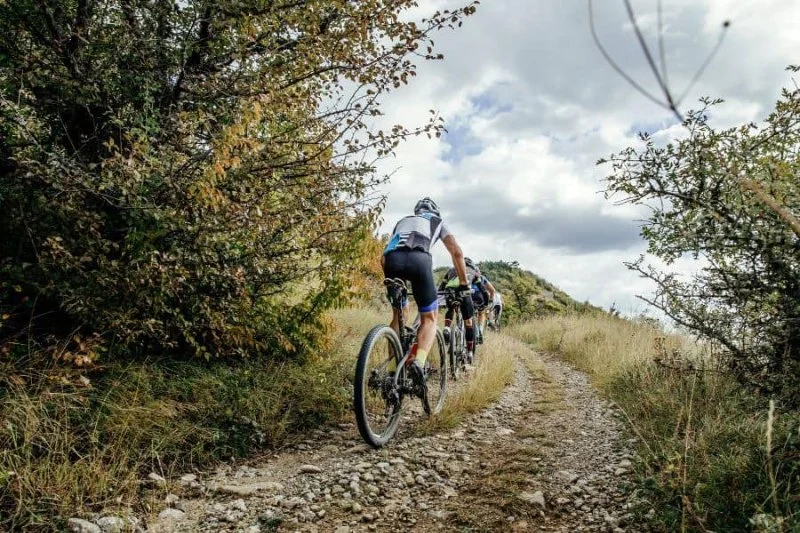
- 1- Understanding Rolling Hills Terrain
- 2- Techniques for Riding Rolling Hills Efficiently
- 3- Gear Selection for Hill Climbing
- 4- How to Improve Stamina for Hill Riding
- 5- Maintaining Energy During Hill Climbing
- 6- Real-Life Experience: Riding Rolling Hills
1- Understanding Rolling Hills Terrain
Rolling hills are a common feature in many landscapes and present a unique challenge for cyclists. These terrains typically feature a series of short climbs and descents that require a combination of power, technique, and pacing. While not as steep as mountainous climbs, rolling hills demand a steady rhythm and efficient energy management.
Before you start cycling in rolling hills, it’s important to understand that the terrain can vary greatly depending on your location. Some hills may be steeper or longer than others, so it’s important to stay adaptable and adjust your strategy accordingly.
2- Techniques for Riding Rolling Hills Efficiently
Riding rolling hills requires smart cycling techniques. Here are some key tips:
- Shift Early: Anticipate upcoming climbs by shifting to a lower gear early. This will allow you to maintain a steady cadence and avoid overexerting yourself.
- Maintain a Steady Cadence: Aim for a steady, consistent cadence when climbing hills. A cadence of 70-90 revolutions per minute (RPM) is ideal for maintaining efficiency and avoiding fatigue.
- Use the Downhill to Recover: After cresting a hill, use the descent to regain energy. Focus on maintaining your momentum and keeping your cadence high to avoid losing speed.
- Stay in the Saddle: Whenever possible, stay seated when climbing. This helps conserve energy and allows for better control of your bike. Standing up should be reserved for steep sections or when you need an extra burst of power.
3- Gear Selection for Hill Climbing
Your gear selection plays a crucial role in cycling efficiently on rolling hills. Here are some essential tips for choosing the right gears:
- Use Your Smallest Chainring: On an uphill section, shift to your small chainring for easier pedaling. This allows you to maintain a high cadence while conserving energy.
- Choose the Right Cog: Combine your small chainring with the appropriate rear cog to ensure you have the right resistance. A lower gear helps maintain a smoother, more efficient ride.
- Keep Your Gears Clean: Clean and lubricated gears work more smoothly, especially during hill climbs when you need maximum efficiency.
4- How to Improve Stamina for Hill Riding
Improving your stamina for rolling hill riding requires consistent training and proper conditioning. Here are some effective strategies:
- Interval Training: Incorporate interval training into your rides. Alternating between high-intensity sprints and recovery periods will help build endurance and power for hills.
- Strength Training: Focus on lower body strength training exercises, such as squats and lunges, to improve your climbing power.
- Consistent Hill Repeats: Include hill repeats in your training regimen. Climbing the same hill multiple times during a ride helps build muscle memory and mental toughness for tackling rolling hills.
5- Maintaining Energy During Hill Climbing
One of the biggest challenges of riding in rolling hills is managing your energy efficiently. Here are some tips to help you maintain energy levels throughout your ride:
- Stay Hydrated: Drink water consistently, especially on longer rides. Dehydration can lead to fatigue, making it harder to climb hills.
- Eat Energy-Rich Snacks: Carry energy bars, gels, or fruits to replenish your energy reserves. Eating small amounts of food regularly helps prevent crashes in energy.
- Pace Yourself: Don’t go all out at the start of a ride. Conserving energy during the initial phases of a ride will give you the stamina needed to handle more challenging hills.
6- Real-Life Experience: Riding Rolling Hills
Many cyclists have shared their experiences riding rolling hills, and these stories can provide valuable insights. For example, a seasoned cyclist recounts his journey through the hills of the Appalachian Mountains, where he paced himself by strategically shifting gears and staying seated during the climbs. He found that by focusing on consistency rather than speed, he was able to conserve energy and maintain a steady pace over long distances.
Another cyclist shared that when riding rolling hills, she would use the downhills to recover, allowing herself to gain enough speed to tackle the next climb efficiently. Her key tip: “Don’t rush up the hills, use the flats and downhills to recover and reset.”
As you take on rolling hills, remember that efficiency and consistency are key. Every hill presents a different challenge, but by utilizing proper techniques and maintaining a steady pace, you can make each climb feel smoother.
If you’re looking to enhance your cycling gear and techniques for tackling rolling hills, visit Cycling Guider for expert advice and the best products suited for your needs.


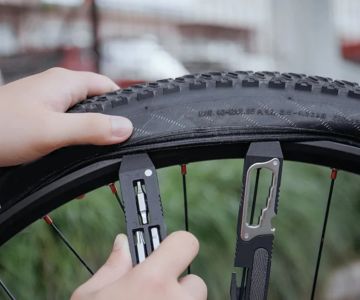
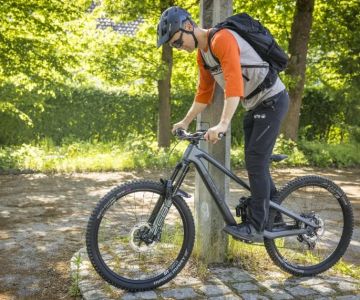

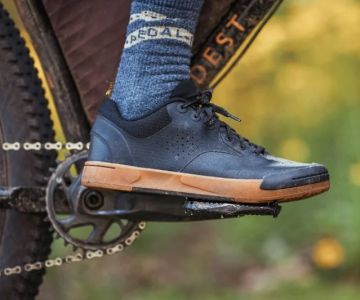
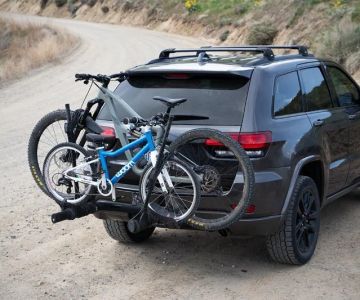
 Bicycle Express5.0 (102 reviews)
Bicycle Express5.0 (102 reviews) FLY e - bike4.0 (76 reviews)
FLY e - bike4.0 (76 reviews) Live It Xtreme Sports & Fitness4.0 (23 reviews)
Live It Xtreme Sports & Fitness4.0 (23 reviews) Ocean City Bicycle Center4.0 (99 reviews)
Ocean City Bicycle Center4.0 (99 reviews) Conte's Bike Shop4.0 (109 reviews)
Conte's Bike Shop4.0 (109 reviews) Let's Roll Electric Bike Shop4.0 (74 reviews)
Let's Roll Electric Bike Shop4.0 (74 reviews) How to Teach Kids to Ride a Bike: A Step-by-Step Guide for Parents
How to Teach Kids to Ride a Bike: A Step-by-Step Guide for Parents Tips for Riding on Busy City Streets: Smart Strategies for Urban Cyclists
Tips for Riding on Busy City Streets: Smart Strategies for Urban Cyclists Best US National Parks for Mountain Biking: Ride Epic Trails Across America
Best US National Parks for Mountain Biking: Ride Epic Trails Across America Best Aero Helmets for Time Trials and Racing
Best Aero Helmets for Time Trials and Racing How to Clean and Lubricate Your Bike Chain Like a Pro
How to Clean and Lubricate Your Bike Chain Like a Pro 10 Must-Have Items for Long-Distance Cycling Trips
10 Must-Have Items for Long-Distance Cycling Trips